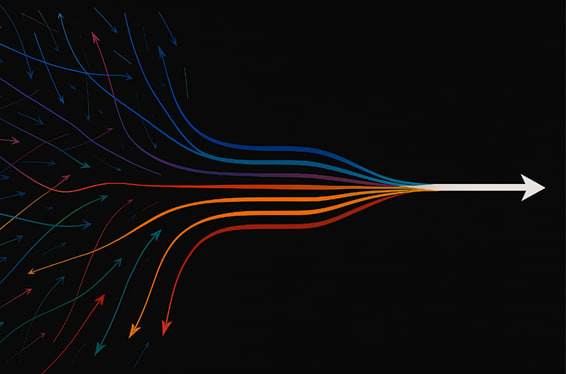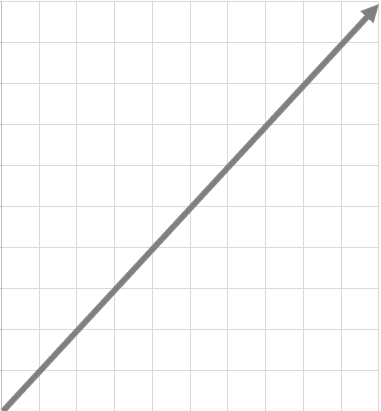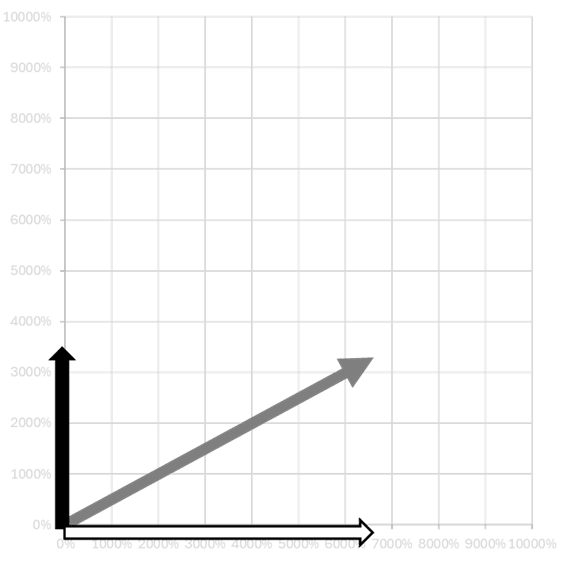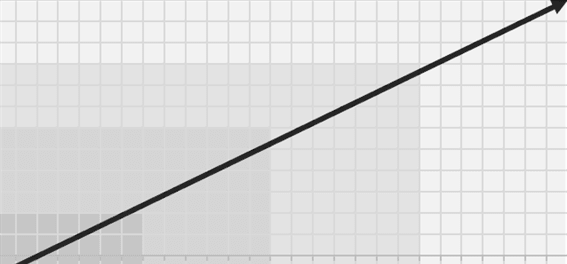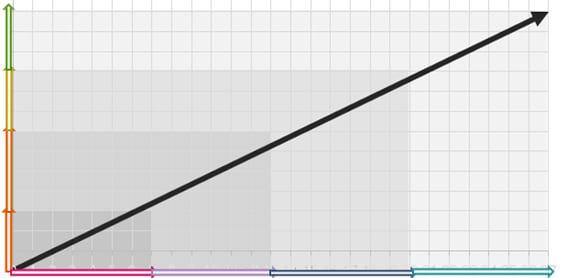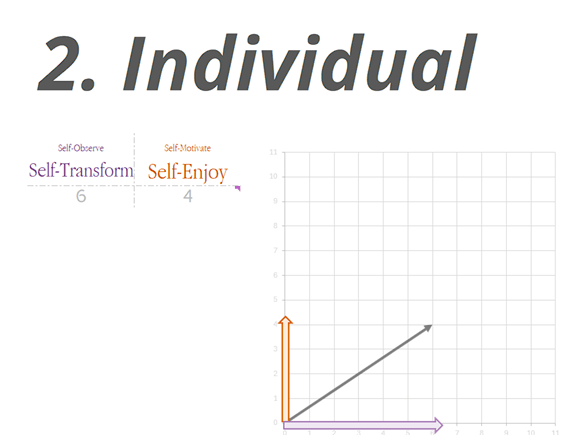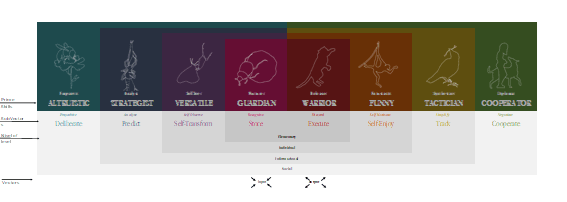8 PRIME IDENTITIES - A simplified construction from MaxEnt Informational Efficiency in 4 questions
post by P. João (gabriel-brito) · 2025-04-17T11:04:07.424Z · LW · GW · 4 commentsContents
1. The Mega Vector: Information Efficiency
2. The initial Key Question
Decompose the “Mega Vector”
2. The 3 Levels Questions
IDENTITIES
RESULTS
CONCLUSIONS
REFERENCES
None
4 comments
What is this about?
This project seeks to reduce the cognitive complexity involved in self-evaluating moments, goals, habits, and tasks among incarcerated individuals. I propose a discontinuous self-assessment system grounded in a model of eight intersecting identities.
We often experience complex things (like learning) that can’t be understood just by looking at their pieces. This framework uses ideas from information theory (how systems handle uncertainty) to give us five simple questions for examining our own thinking and behavior.
1. The Mega Vector: Information Efficiency
The “Mega Vector”: We aim to maximize useful information under our own limits (time, energy, attention), MaxEnt principle, That is, what exists in common in every act would be to maximize the information available in the universe.:
- Goal: Ask simple questions to decompose vector and see yours areas. So focus on what really matters and improve our ability to generate and use information.
2. The initial Key Question
These helps break down any activity by asking where your main focus lies:
Decompose the “Mega Vector”
- Internal vs. External?
- Are you changing yourself or changing your surroundings?
- Example: Eating fuels your body (x), while Hunting changes the environment (y).

2. The 3 Levels Questions
These help break down any activity by asking where your area focus lies:
- Elemental vs. Individual?
- Are you working with basic, shared processes (needs common of specimen, genetics) or with your own personal experiences and memories?
Example: Exercising follows common biological rules (elemental), creating art expresses your unique ideas (individual).
- Individual vs. Informational?
- Within personal focus, are you connecting your own memories with common specimen needs, or comparring the information, the memories?
Example: Creating art (individual) vs. using them to solve a problem (informational).
- Informational vs. Social?
- When using information, are you generating ideas for yourself or collaborating and communicating with others?
- Example: Doing math (informational) vs. discussing a project with a team (social).

IDENTITIES
We start from the universal objective of combining useful information. We decompose this “mega-vector” into x/y and four levels areas:
- Elemental (environment ↔ genes)
- Individual (Elemental ↔ memories)
- Informational (Individual ↔ memories)
- Social (Informational ↔ Collaboration)
Each area permits two SubVectors: input focus (x) and output focus (y), totaling eight vectors.

Names are given to these sub-objectives along with a corresponding score to be applied in one’s life. It is important to note that these metrics are self-assessments and inherently subjective. The numbers are used as relative references (for example, “Compared to my last month, or comparing specific moments: am I more focused on X?”). The labels serve as metaphors rather than strict scientific definitions. For instance, at the elemental level, one might aim to be more receptive or more active – focusing on eating well or exercising might be reflective of such contrasts. As below:

To confirm the meaning of the levels, we can also see some relationships with evolutionary psychology, as follows:

And we can name related identities needed for these goals, and illustrate with some totems, insects for inward identities, animals for outward identities, cool colors for inward identities, warm colors for outward identities: As figure bellow:

Another way to look at the process as sets, to analyze personal priorities as in the example below:
RESULTS
With these parameters, one can formulate questions for special moments in life to help organize events, routines, and tasks. This approach comes closer to the atomic model where, even though we might not precisely pinpoint an electron’s layer, through specific questions we can predict which area our focus lies in. As the diagram below shows:
Thus, having a slightly more accurate assessment of objectives, routines and tasks. In addition to making a more accurate diary template like the one proposed here [LW · GW].
CONCLUSIONS
We have thus defined probabilistic identities. The apparent dichotomy serves as an analytical tool rather than an absolute division. In practice, these categories merge—indeed, by affirming that “by changing oneself one changes the environment.”
A linear detailed construction in:
8-probabilistic-skills-a-construction-from-maxent [LW · GW]
A specific more application in:
gamify-life-from-bayesianmind [LW · GW]
Your feedback is welcome!
If you have suggestions, critiques, or experiences to share, feel free to comment publicly or send me a private message. Every perspective helps refine the tool and make it more useful.
REFERENCES
Framework inspired by Jaynes’ Maximum Entropy and later work on information in biology and cognition. Use it as a practical tool, not a strict rulebook.*
4 comments
Comments sorted by top scores.
comment by Viliam · 2025-04-17T23:15:46.407Z · LW(p) · GW(p)
That's too abstract, I have no idea what it is supposed to mean and how it is supposed to be used.
Replies from: gabriel-brito↑ comment by P. João (gabriel-brito) · 2025-04-18T00:23:56.470Z · LW(p) · GW(p)
I use it to organize my moments of maximum motivation, objectives, routines, tasks and diary. Would you like an example in which areas?
Replies from: Viliam↑ comment by Viliam · 2025-04-18T00:37:26.798Z · LW(p) · GW(p)
Yes, I think examples could make this much clearer.
Replies from: gabriel-brito↑ comment by P. João (gabriel-brito) · 2025-04-18T01:26:52.779Z · LW(p) · GW(p)
I'm going to do it with the moments of peak motivation.
